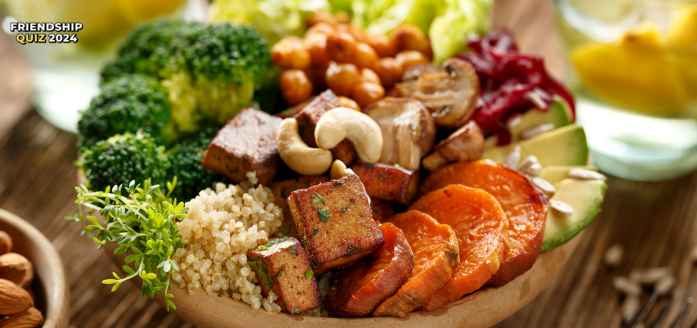Eating healthy during the workweek can be a real challenge when you’re juggling a packed schedule of meetings, deadlines, and commitments. By the time you get home from work, the thought of cooking a nutritious meal from scratch can seem overwhelming. That’s where meal prepping comes in – it’s a game-changer for busy professionals looking to stick to a healthy diet without sacrificing convenience.
Meal prepping simply means taking a few hours at the beginning of the week to prepare meals and snacks in advance. With a little planning and prep work upfront, you can enjoy delicious, nourishing meals throughout the week without having to spend hours in the kitchen each night. And the best part? It saves you time, money, and helps you make smarter food choices.
Not sure where to start with meal prepping? We’ve got you covered with these pro tips to simplify healthy eating during those hectic workweeks.
1. Plan Your Meals in Advance
The first step to successful meal prepping is planning out your meals for the upcoming week. Take some time to sit down and think through what you want to eat – make sure to incorporate a variety of lean proteins, whole grains, healthy fats, fruits, and veggies. Having a meal plan mapped out will not only streamline your grocery trips, but it will also prevent you from falling into the takeout trap when you’re short on time.
When planning meals, consider your nutritional goals – maybe you want to lose weight, build muscle, or simply eat more plants. Factor in any dietary restrictions as well. Then get creative and design a menu with recipes you know you’ll enjoy. Don’t be afraid to repeat meals – having the same chicken dish or grain bowl twice in a week cuts down on prep time.
2. Batch Cook Proteins, Grains & Veggies
Once you have your weekly menu set, identify which ingredients you’ll need to prep in advance to streamline your meal assembly later on. This usually includes cooking proteins in bulk (like baked chicken, ground turkey, tofu or beans), batch cooking whole grains (quinoa, brown rice, etc.), and roasting/steaming veggies. Preparing these basic components in large batches at the start of the week provides the building blocks for quick, mix-and-match meals.
When cooking proteins and veggies, consider different seasoning combinations to keep things interesting – you can go southwestern with taco seasoning one night, then Asian-inspired teriyaki flavors the next. Having pre-prepped ingredients on hand makes pulling together a balanced meal as easy as combining a protein, grain, veggie and sauce.
3. Embrace Mason Jar Salads
Crunchy, fresh salads can be tricky to meal prep, since leafy greens tend to wilt when dressed too early. The ingenious solution? Mason jar salads! Layer your salad ingredients in a jar or meal prep container, dressing on the bottom and greens on top. When you’re ready to eat, just dump everything into a bowl and toss. This way, you’ll have a perfectly crisp salad waiting for you all week.
Get creative with your mason jar salad recipes – the combinations are endless. You can go Greek with quinoa, feta, olives and peppers; Mexican with riced cauliflower, black beans, corn and pepitas; or opt for composed salads like a Nicoise with tuna, eggs, potatoes and green beans.
4. Freezer-Friendly Meal Prep
Don’t underestimate the power of your freezer for easy meal prep! Soups, stews, casseroles and baked dishes can all be prepped ahead in bulk and frozen in portable, single serving containers. When you need a hot meal on a busy night, you can simply defrost and reheat. Having a stash of freezer meals means you’ll never have to resort to unhealthy delivery or frozen meals again.
Chilies, curries, lasagna and enchiladas all freeze beautifully. You can also make big batches of basics like sauces, grain blends or smoothie packs to freeze in portion sizes. Just remember to leave room at the top of your containers for expansion as food freezes. With a well-stocked freezer, you’re always just a few minutes away from a wholesome home-cooked meal.
5. Snack Prep is Key
While you’re prepping ingredients for meals, don’t forget to prepare healthy snack options too. When hunger strikes between meals, you want nourishing bites on hand so you’re not tempted to hit the vending machine or grab something unhealthy. Prepping snacks is one of the easiest ways to stay on track with a healthy eating plan.
Stock up on grab-and-go snacks like fresh fruits, pre-portioned nuts and seeds, hardboiled eggs, hummus and veggies, yogurt cups or homemade energy bites. You can even batch prep fresh snack boxes by portioning out trail mixes, fresh fruit and nut butter, or cheese and crackers in to-go containers. When the 3pm slump hits, you’ll be grateful to have those snacks ready instead of turning to chips or candy from the office kitchen.
6. Master the Mix & Match
For maximum meal prep efficiency, get in the habit of making nutritious components that you can mix, match and combine into different meals throughout the week. Rather than prepping entire composed dishes, focus on prepping a few proteins, grains, veggies and sauces/dressings that can be assembled into different combinations.
For example, batch grill a few chicken breasts, bake a couple salmon filets, roast some broccoli and sweet potatoes. Then have cooked quinoa, brown rice or farro on hand, plus a couple of versatile sauces like teriyaki, salsa verde or tahini dressing. With these basic building blocks, you can create an endless variety of power bowls, stir fries, salads and more in just a few minutes. The mix-and-match method keeps meal prep interesting and prevents burnout from repetitive dishes.
7. Portion Prepped Meals
One of the key benefits of meal prepping is knowing exactly how much you’re eating, which makes it easier to manage portions and stick to your dietary goals, whether that’s weight loss, muscle building or simply maintaining your weight. When portioning out ingredients, be mindful of proper serving sizes and don’t go overboard – it’s easy to overeat even healthy foods.
The easiest way to control portions is to invest in a set of high quality meal prep containers, preferably ones with divided sections to neatly separate each food group. Many containers even come with slotted lids to vent steam. You can also use single serving containers, mason jars or Ziploc bags for portioned meals that you can easily reheat. Having your portions prepped in advance removes the guesswork and temptation to overindulge.
While the initial prep work requires some time upfront, meal prepping quickly becomes a habit that pays dividends in the form of faster, smarter and more delicious weekday eating. Say goodbye to unhealthy desk lunches, expensive takeout dinners and excuses for skipping meals entirely. With a well-stocked fridge of prepped, wholesome foods, you can seamlessly merge healthy habits into even the most hectic of schedules. All it takes is a little planning and know-how, and you’re on your way to nutritious, time-saving meal prep mastery.



